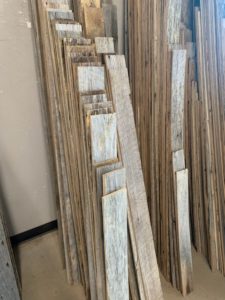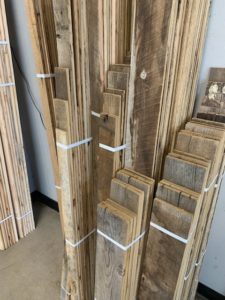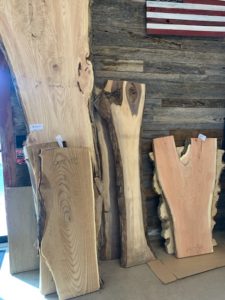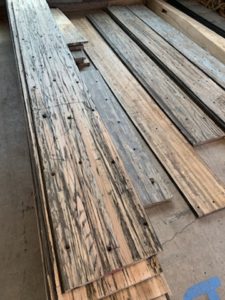I’m still struggling with my bed platform plan, as far as how to get the rear section to angle up properly when it’s time to push the whole platform back and stow it; more specifically, how to get the rear section to lay flat, but somehow pop up from flat when needed, so it will angle up properly.
As I mentioned before, I’m leaning toward using linear actuators; these devices will solve two problems for me: 1) pushing the rear section up so the rest of the platform can be pushed back, and 2) they will also serve as guides for the rear platform, and provide support for that raised section when the platform is stowed. I don’t think I’d want to depend on them solely for support, however.
That said, I stumbled upon a YouTube video by a couple who have a small van and they had designed, using 80/20 (my new favorite material) a bed platform made up of two long sections, the frames of which were built with hinges and could be folded up into a pair of bench seat each, one forward, one backward. I started sketching out some ideas for my design using this plan, and thought for a brief bit “This is brilliant! All my problems are solved!” until I realized that it wouldn’t work for me at all and I just scratched through it all.
But, it got me thinking some more about the initial rear pop-up problem in some different ways, and now I’ve got a couple of strategies to tackle. One involves solenoids – the idea is to mount a pair of push solenoids vertically directly beneath the rear platform surface; push a button to complete the circuits, the solenoids push the post out, and in this case, up into the platform, which will raise it slightly. Will it raise it enough to make it travel with pressure from the front of the platform, though? The question is, are there solenoids out there with enough travel to make this workable?
The other strategy is much more manual. This idea involves a pair of sliding posts, mounted vertically so they can be actuated to rise up and lift that platform. My current working idea is to have small pulleys mounted on the bottom surfaces of these posts, and have cables routed across the bottom of the bed platform, through these pulleys, and secured onto the fixed platform supports. I’d have a handle on the face of the foot of the bed platform; pulling this handle would pull on the cables, and when the cables became taut, the sliding posts would rise as the cable rolled on the pulleys underneath. One hand to pull this handle, another hand to push, to start the travel of the platform as a whole.
I’m leaning toward the more manual plan; no electrical components to fail, far easier to repair if need be. And the handle/cable design can also be used for retracting spring bolts which slide into holes in the main platform supports, designed to prevent the platform from moving. Two holes on either side for this spring bolt to seat into; one for deployed position, one for stowed position.
Back to sketching!
I returned to a small reclaimed wood shop not far from where I live today; the last time I was there, I realized I hadn’t really taken any good information with me, and I wanted to see if they would give me some sample scraps.
The main thing I wanted to get a better look at is the barn wood. I learned today that those boards are fairly thick, and tend to have a “gray side” and a “brown side” – outside vs inside – and these folks will cut these boards in half, and sell the two sides separately. Apparently the gray boards are in higher demand, and hence, are more expensive; $8.50/sq ft vs $7/sq ft for the brown.
The trick with these boards is the thickness and surface; there’s always going to be variances. On average, they try and cut these boards down to 7/16″, and the sample piece I got to take with me, just eyeballing it, it looks to be a good thickness for a van ceiling. I asked the fellow at the shop about how well this wood takes to planing, and he said it’s generally good down to 1/8″, so it shouldn’t be too much of a worry to take a bunch of planks and get them all to the same thickness.
I’m debating on the walls, though, whether it’s thick enough or not. I’m guessing not, especially if I decide to mount any features directly to the van wall wood. (I plan to mount any cabinets and other significant features to the floor and van walls anyway, not to the trim.) I may just opt for slightly thicker beetle kill wood for the walls, just to have a different look than the ceiling. This reclaimed barn wood would make good trim and accents on things like cabinet doors and the like, too.



They also carry a variety of live-edge wood, something I’m hoping to use for countertops, and long pieces full of mounting holes that were pulled from old truck beds. They sell these boards as-is or will fill in the holes with epoxy and do a nice treatment of the whole surface; for a fee, of course. He had one tabletop done like this that they wanted $1500 for, phew!

